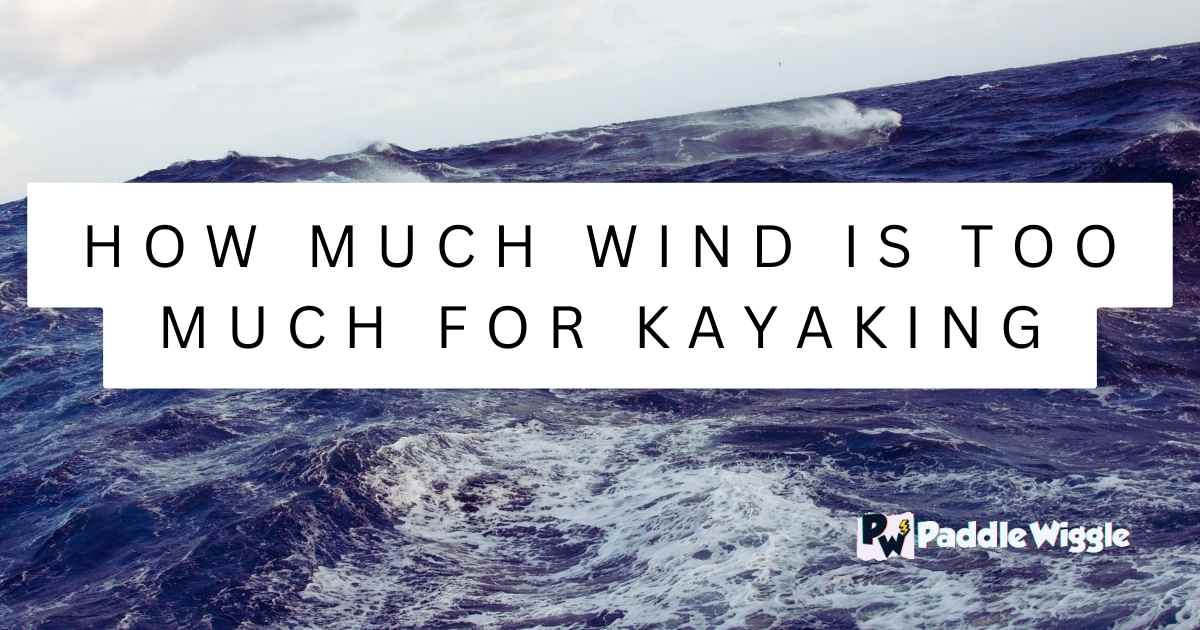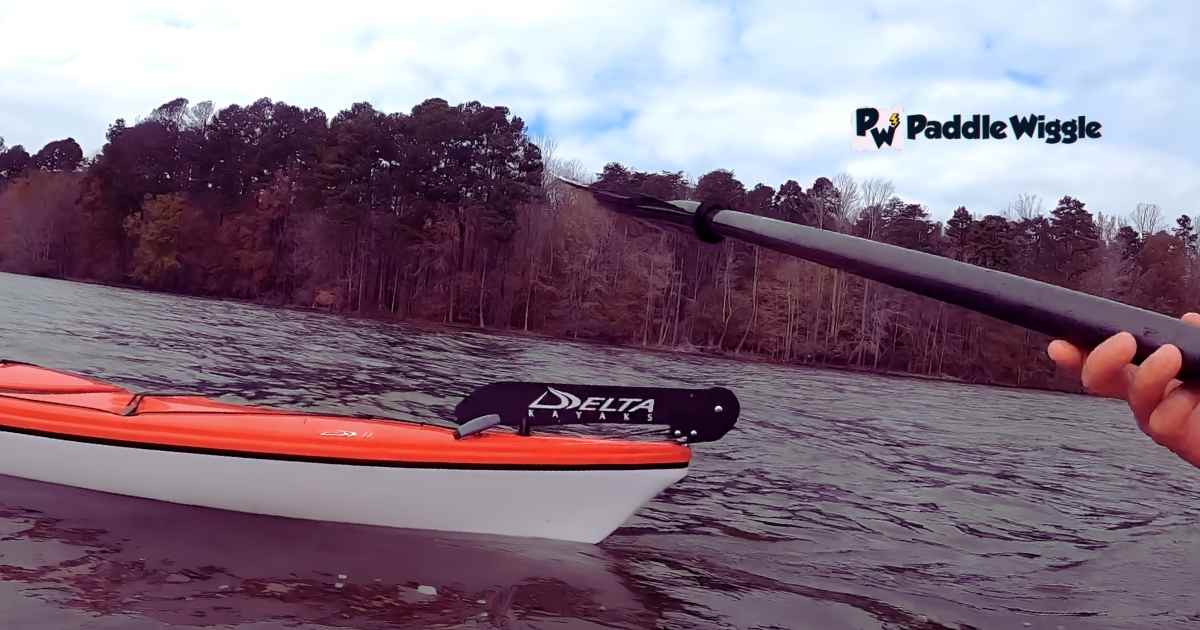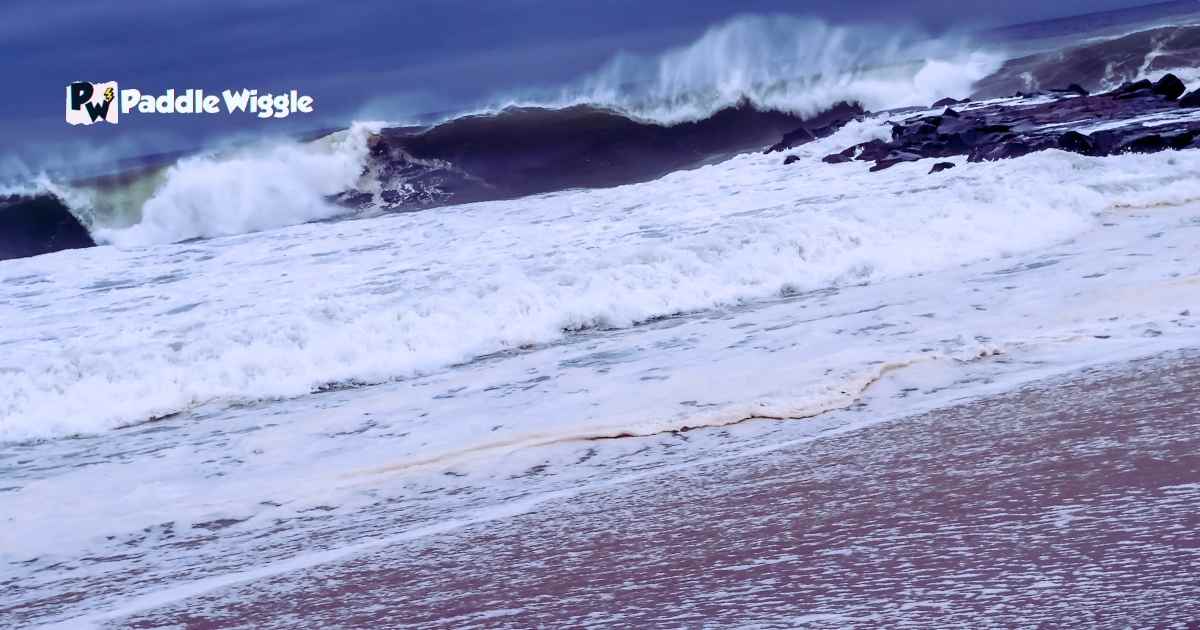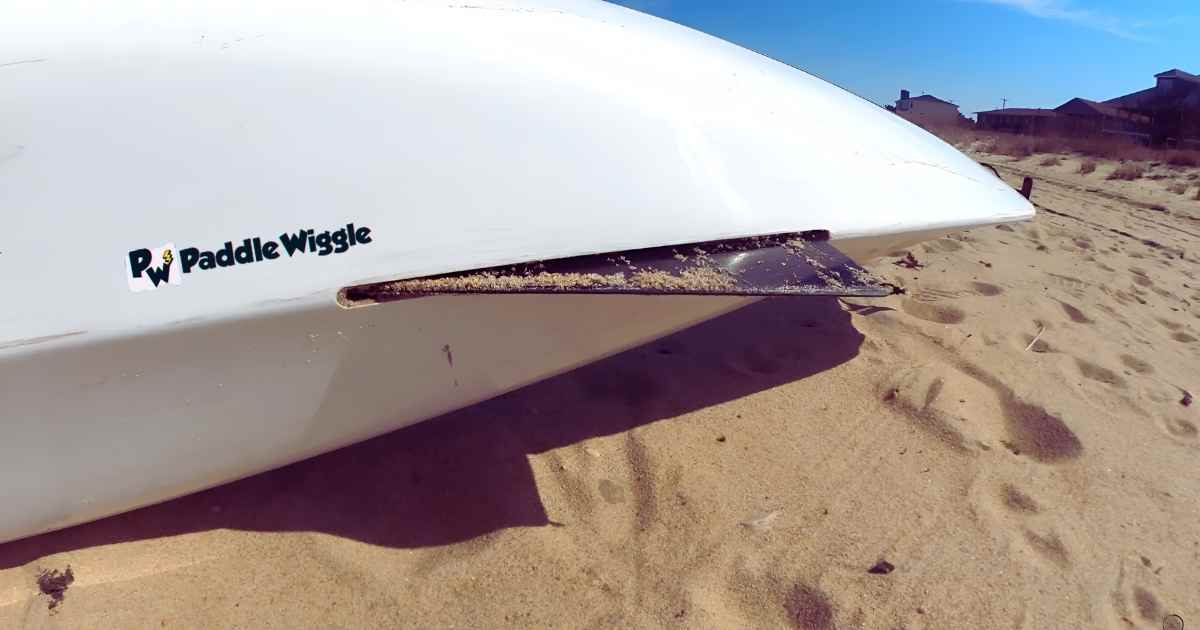Kayaking is an exciting outdoor activity that lots of adventurous people love. It’s a chance to explore nature and get some exercise at the same time.
But before you go on a trip, there are some things you need to think about. The weather can be unpredictable, and it can affect your experience on the water. And the wind is a big factor here.
When the wind gets strong, kayaking can become risky. Winds can make the water difficult to navigate. It can push your kayak in unwanted directions and make it hard to control.
But how much wind is too much for kayaking? Usually, when the wind goes faster than 15 knots, it’s considered too much for kayaking.
In addition to wind speed, it’s also important to know how the wind blows. Headwinds blow right against where you want to go, making it harder to paddle and needing more effort.
Conversely, tailwinds push you from behind and can make it tricky to steer and control the kayak properly.
That’s why it’s crucial to understand the dangers and take precautions when kayaking in windy conditions.
Let’s get started!

Contents
Wind Speed In Kayaking
Understanding wind speed is really important when it comes to kayaking. If you’re just starting out, windy conditions can be especially tough. You might not have much experience or skills yet, making it harder to control and move your kayak how you want.
If the wind blows really strongly, it can push your kayak in a different direction than where you want to go. Imagine trying to paddle straight ahead, but the wind keeps pushing you to the side or even backward!
It can be frustrating and unsafe, especially when you’re still learning how to kayak.


Now, let’s explore different wind speeds and what they mean for kayaking:
Wind Speed 10-15 Knots
When the wind speed is between 10 and 15 knots, most kayakers with a bit of experience can handle it. That’s like going at around 11 to 17 miles per hour. It might take some effort to keep control of your kayak and make progress, but it can still be fun and relatively safe, up to 15 knots.
Wind Speed 15-20 Knots
Once the wind speed exceeds 15 knots, things become more challenging and potentially dangerous. The stronger winds create bigger waves and swell on the water, making it harder for you to steer and control your kayak.
In these conditions, many kayakers might find it difficult to stay on the path they want and move forward.
Wind Speed Above 20 Knots
Now, things become even more demanding when the wind speed goes above 20 knots, which is about 23 miles per hour or 37 kilometers per hour. The waves and swells can become really big, like riding a giant roller coaster!
It becomes extremely challenging to steer and control your kayak in such conditions.
In fact, there’s a higher risk of something called “capsizing” when the wind is super strong.
Capsizing is when your kayak flips over, and you end up in the water. It can be scary and dangerous, especially if you’re not prepared or wearing the right safety gear.
When the wind is strong, the risk of capsizing increases a lot, and you want to avoid that unless you have advanced skills and lots of experience.
The Impact Of Wind On Kayaking
The wind plays a big role in kayaking and can impact your experience and safety out on the water. Understanding how the wind affects kayaking is important, especially for those who are just starting!
Let’s have a look at a few common impacts of wind in kayaking.
Paddling Difficulty


One of the ways the wind impacts kayaking is by making paddling more difficult. When you’re kayaking into the wind, which is called a headwind, it creates resistance and slows you down. It’s like trying to walk against a strong gust of wind – making progress takes more effort and energy.
On the other hand, if the wind is behind you, which is called a tailwind, it can give you a boost of speed but also make it harder to control and steer your kayak.
Directional Control
The wind also affects your ability to control the direction of your kayak. When the wind blows from the side, which is called a crosswind, it can push your kayak off course.
This can be especially challenging for beginners who are still learning how to kayak and need to make constant adjustments to stay on their intended path.
Wave Conditions
In addition to affecting your direction, the wind can also create waves on the water, especially in more open areas. These waves can make your kayak feel wobbly and unstable, increasing the chances of it tipping over. It can be even more challenging if there are currents caused by the wind, which can make the waves even stronger.
To handle these conditions safely, you must be prepared and have the right skills to stabilize your kayak.
Fatigue And Endurance
Paddling against strong winds can also make you tired more quickly. It requires a lot of strength and endurance to paddle against the resistance of the wind.
So, knowing your limits and listening to your body is important. If you start feeling too tired, it’s a good idea to take a break, rest, or adjust your plans accordingly.
Understanding how the wind affects your kayak and your abilities is essential. Pay attention to the wind speed and direction before you go kayaking, and choose the best routes and locations based on your skill level and the conditions.
And, of course, always wear a life jacket and any other necessary safety gear to ensure your well-being on the water.
So, keep these things in mind and have a great time kayaking while staying safe and having fun!
5 Signs That It’s Too Windy To Go Kayaking
Kayaking is an exciting water activity that lets you explore nature and have fun on the water. But wind can affect how safe and enjoyable it is to go kayaking. So understanding the signs that show it’s too windy is important for your safety.
Here are five signs that it’s too windy for kayaking.
Excessive Whitecaps


Have you seen those foamy white waves on the water? They’re called whitecaps, and they happen when strong winds blow.
If you notice a lot of whitecaps or they’re always there, it means the wind is blowing really hard. Too many whitecaps can make kayaking tough and even dangerous, especially if you’re new to it.
Uncontrollable Drift
When the wind is too strong, it can push your kayak in a direction you don’t want to go. Even if you try to paddle against the wind, you might find yourself going off course.
If you’re having trouble staying on track or feel like the wind is carrying you away, it’s a clear sign that it’s too windy for kayaking.


In these conditions, saving your energy for calmer winds, and staying close to the shore is better than unnecessary struggle. You will get an advantage if you have a rudder or skeg installed on your kayak.
Unpredictable Wind Gusts
Strong winds can come in sudden bursts called gusts. These gusts can be unpredictable and make kayaking tricky and even dangerous.
If you’re experiencing these gusts frequently and they’re unpredictable, then it’s too windy for kayaking. It can make your kayak unstable and hard to control.
Low Visibility
Imagine if you can’t see clearly when you’re out on the water. That’s what happens when the wind is really strong. It can kick up spray, mist, or rain, making seeing what’s around you harder.
Weather conditions like rainstorms, fog, or big waves spraying water can lower visibility a lot. When you can’t see well, it’s difficult to spot potential dangers and know what’s going on. It can also make it harder for others to see you, which can lead to accidents.
So, it’s best to avoid kayaking in such wind conditions.
Strong Wind Noise
Have you ever heard a loud whistling or howling sound when the wind is blowing hard? It’s because the wind is rushing past your ears.
When you hear this kind of noise constantly and loudly, the wind blows really fast. This noise is a sign that it might not be safe to go kayaking.
If you’re hearing this, don’t go too far.
How To Measure Wind Speed For Kayaking
Wind speed is typically measured in miles per hour (MPH), but there are other units of measurement, such as knots and kilometers per hour (KMH).
In addition to monitoring wind speeds, kayakers should also check the National Weather Service’s small craft advisory.
This advisory is given when the wind gets really strong, more than 21 knots. It’s like a warning sign that tells us the conditions might not be safe for small boats, including kayaks.
Even if you’re an experienced kayaker, it’s important to pay attention to this advisory and avoid going kayaking when the wind is too strong.
Let’s find out how to measure wind speed for kayaking.
Anemometer
One common way to determine wind speed is to use an anemometer, a device that measures wind speed. Another option is to check online resources such as WindAlert or NOAA websites, which provide real-time information on wind conditions in your area.
Beaufort Scale
The Beaufort Scale is another tool used to measure wind speed. It categorizes wind speed based on its effects on the environment, ranging from calm winds to hurricane-force winds. The Beaufort Scale can also be displayed in MPH, with calm winds less than 1 MPH and hurricane-force winds over 73 MPH.
Limitations Of Recreational Kayaking In Windy Conditions
Recreational kayaking can be lots of fun, but it can also have limitations when it’s really windy.
Most recreational kayakers, who enjoy kayaking as a hobby, might face challenges when they have to paddle in windy conditions. One reason is that they may not have much experience dealing with strong winds – it can be tricky!
Another thing is that recreational kayakers may not have all the skills they need to handle windy weather. Wind can change how the water moves, making it harder to control the kayak.
Using a sit-inside kayak rather than a sit-on-top kayak can provide some protection from the wind and waves, as it offers more enclosed and stable seating.
And without the right skills, keeping the kayak going in the right direction can be tough. So, make sure you know your skill level before venturing out on a windy ocean.
The Biggest Danger Of Kayaking In Windy Conditions
Kayaking in windy conditions can be exciting, but it’s important to be aware of the common dangers that kayakers may face. And open waters, or large lakes, can be more dangerous in windy conditions compared to sheltered waterways.
When it’s windy, the wind affects the current and waves on the water. The current becomes stronger, making it harder to paddle and control the kayak.
This can lead to fatigue, which means you might get tired more quickly. It can also cause seasickness, making you feel queasy or dizzy.
Let’s explore the biggest danger associated with kayaking in windy conditions.
The biggest danger of kayaking in windy conditions is the increased risk of capsizing or rolling over.
When the wind is strong, it creates bigger waves and rougher water. This makes it harder to stay balanced and in control of your kayak.
If you’re not experienced with it, there’s a greater possibility that your kayak could tip over, and you might end up capsizing!
Capsizing can be dangerous, especially if you’re not prepared for that.
It can make you feel scared, confused, and even hurt if you can’t swim or get back into your kayak.
When it’s windy, the risk of capsizing is much higher because the wind is stronger, and it makes the waves more powerful.
Learn More
What is a Safe Wind Speed for Sea Kayaking?
When it comes to wind speed, a generally safe range for sea kayaking is around 10-15 knots. This translates to roughly 11-17 miles per hour.
Most kayakers, especially those with some experience, can handle it well in these conditions. It’s a good speed that doesn’t bring too many risks.
But remember, wind speed is not the only thing that matters for safety. Your skills, where you’re kayaking, the water flow, and the size and stability of your kayak also play a part.
So, always be ready for sudden changes in the weather. Stay safe, and have fun paddling!
Final Words
In conclusion, wind speed for kayaking. When the wind gets too strong, it can make kayaking more difficult and even dangerous. If you’re just starting, don’t go beyond 15 knots.
However, it’s not just about the wind speed. Factors like your skill level, the type of kayak you’re using, and the specific location also affect how much wind is too much for you.
Always prioritize safety and use your judgment. If you notice excessive whitecaps, experience uncontrollable drift, or face unpredictable wind gusts, it’s a sign that it may be too windy to go kayaking.
Remember, it’s better to be cautious and wait for calmer winds or choose a more sheltered location. Don’t forget to check weather forecasts and kayak with a friend who has experience in windy conditions for added safety.



